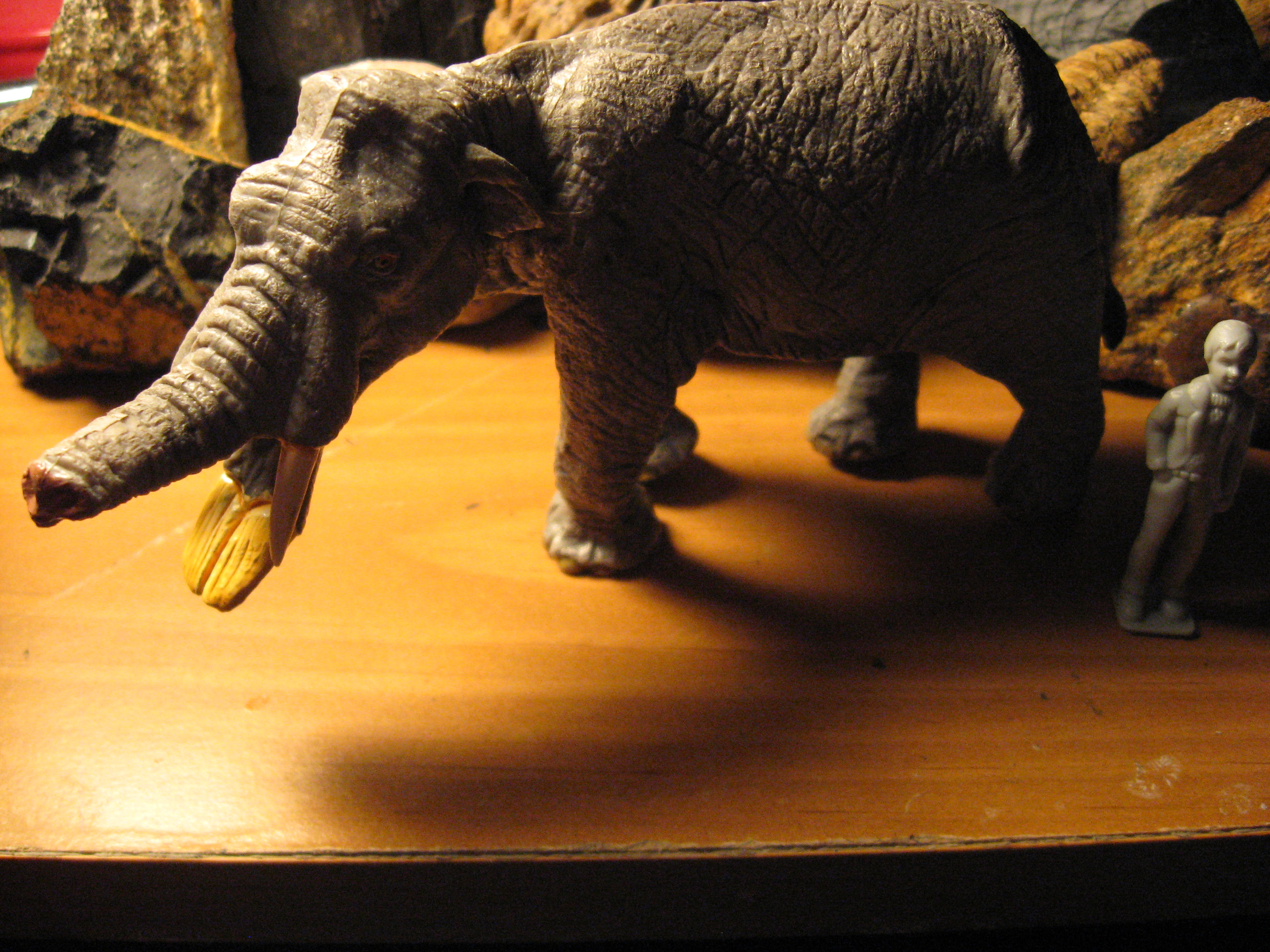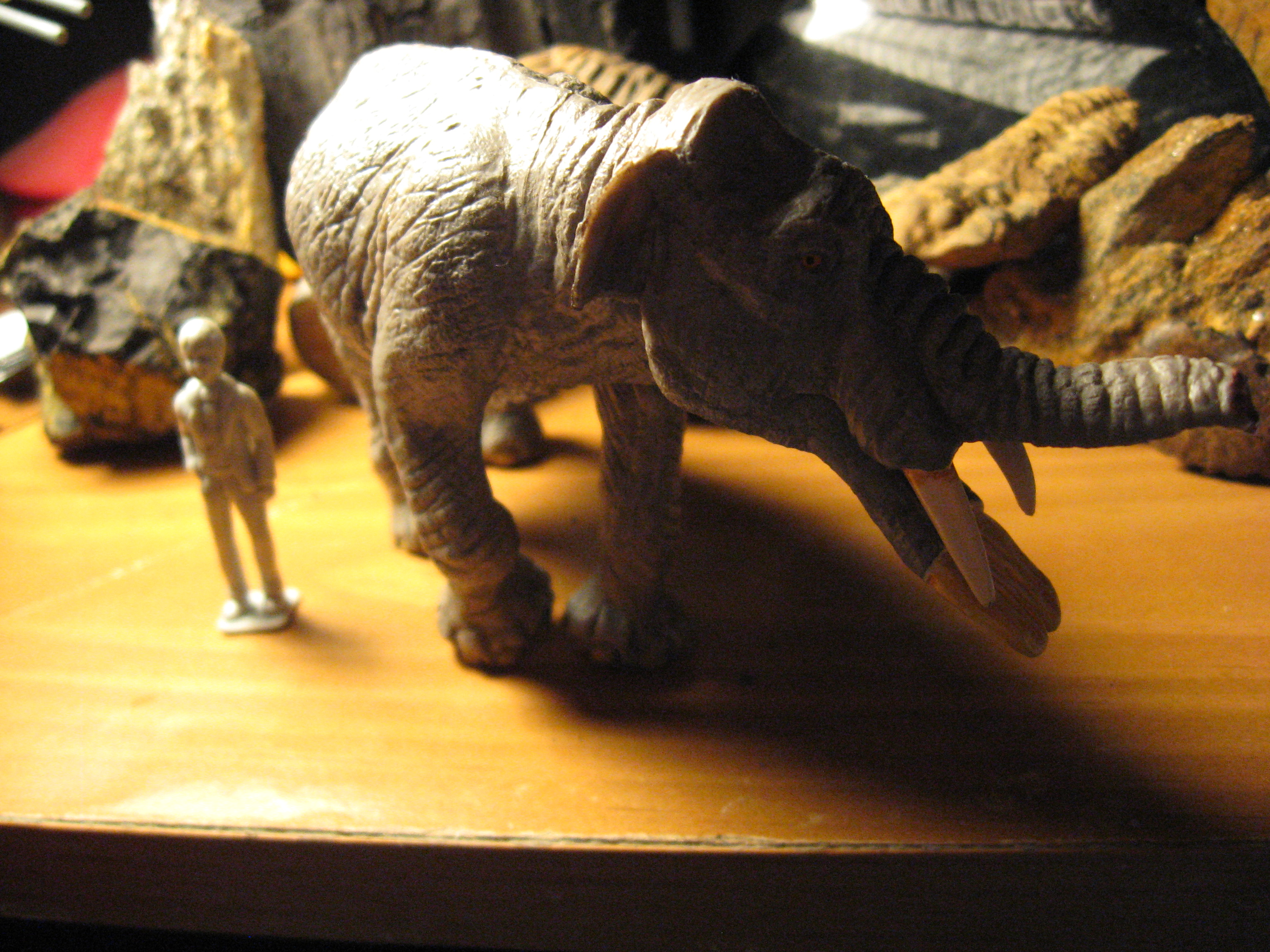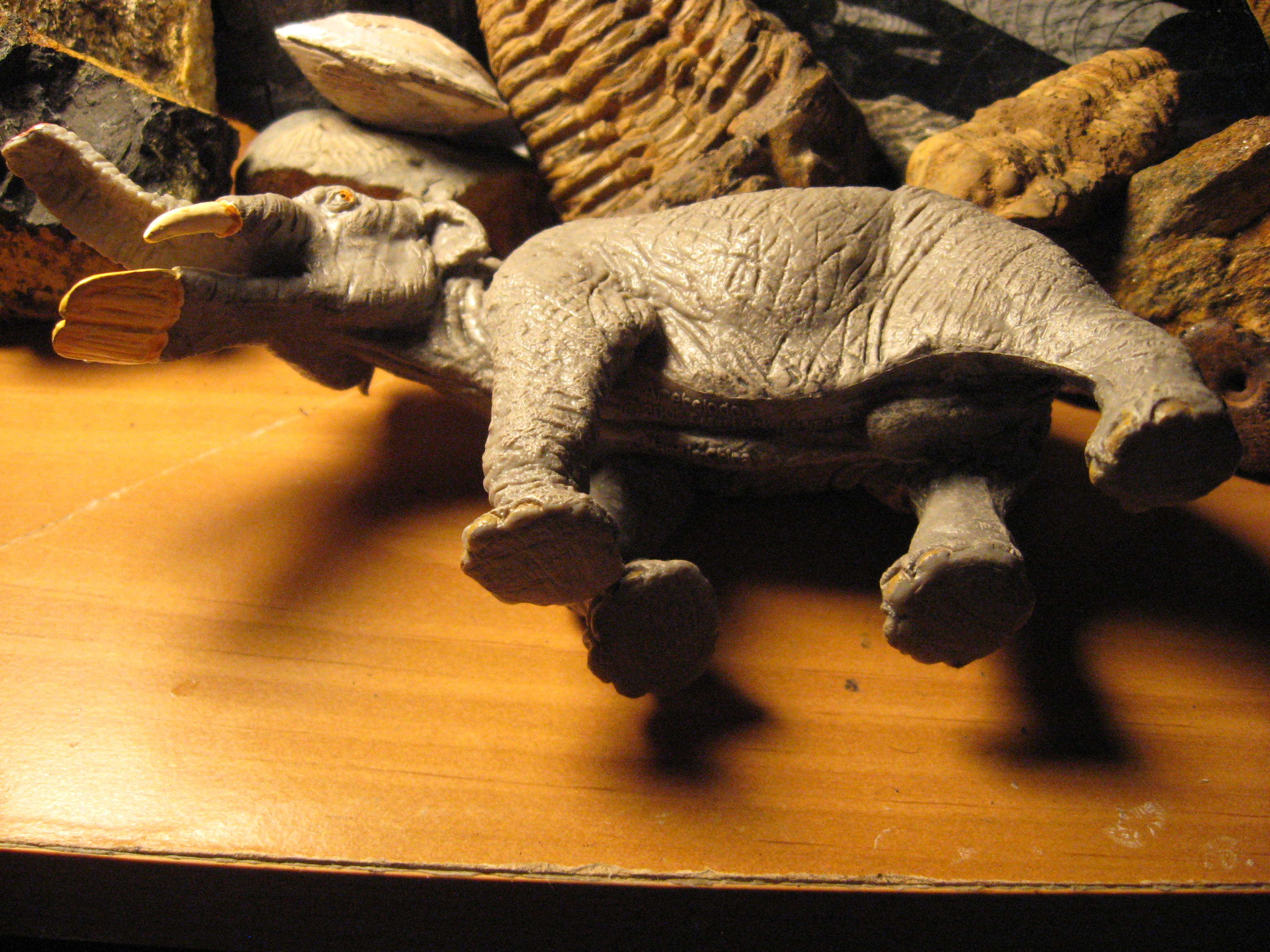Amebelodon was a genus of prehistoric proboscidean which evolved along the Gulf Coast of North America roughly 10 million years ago during the late Miocene, eventually migrating to Asia via the Bering Land Bridge which would have connected Alaska and Russia. The animal became extinct on the North American continent about 6 million years ago but survived in Asia and Africa up until around 5 million. It belonged to a group called the gomphotheres, more commonly known as “shovel tuskers” due to the prominent, bizarre tusks of their lower jaws. Aside from its head, Amebelodon largely resembled a modern Asian elephant.

It’s always great to see a new genus introduced in figure form, and Safari has recently been a leader in this obscure genus crusade. Although other notable gomphothere figures have been produced, such as the now-retired Bullyland Gomphotherium, this is the first iteration of Amebelodon that I am aware of. At a little over 5 1/2 inches long and 3 inches tall, it is the largest of Safari’s 2005 prehistoric mammal wave. If you like to see figures in scale with each other as I do, this fits the bill for 1/40 if you consider it to be of the species Amebelodon floridanus, which was generally smaller than an Asian elephant, while Amebelodon britti was among the largest proboscideans ever to have lived. The figure is mostly gray, the same color it was molded in, but there are details. The skin is wrinkly and elephantine, the tuft at the end of the tail is black, and the nails are painted a tan/yellow color. The tusks are yellowed and the lower pair show deep grooves, giving them a more lifelike appearance. The tongue inside its bellowing mouth is pink and the nostrils at the end of the trunk are as well. Lastly, there are the orange eyes, which are painted somewhat sloppily on mine, but I don’t know if they are all like that. This Amebelodon is in a walking, bellowing pose with the trunk raised.

This is a very accurate figure, and Safari should be applauded. The skull is very true to life. The two deep recesses on top of the skull are represented well here, as are the position of the tusks. It is thought that gomphotheres had smaller ears, like an Asian elephant, and this Amebelodon exhibits this characteristic. The trunk reflects popular gompothere reconstructions, but as trunks do not readily fossilize, their appearance in gomphotheres is still the subject of speculation. The postcranial anatomy is very elephantine, as it should be. Kind of hard to mess that part up to any noticeable degree, as elephants are still with us. Curiously, the animal’s name is misspelled “Ambelodon” on the tag but is correctly printed Amebelodon on the figure’s belly. I dunno who was in charge of that one.

I like this figure. I really do. Safari was really on the ball with mammals in 2005 and I wish they still regularly introduced new prehistoric mammal genera, but this guy is still available so get ‘em while they’re hot! This figure is very affordable at under $6 and you know you’ll be adding something new to your collection if you get it!
Disclaimer: links to Ebay and Amazon on the DinoToyBlog are affiliate links, so we make a small commission if you use them. Thanks for supporting us!




[…] it is presently the biggest prehistoric mammal in the Wild Safari line to date, easily humbling the Amebelodon and woolly mammoth! Based on the abundant fossil remains, the average mastodon grew to the same […]
got to buy this one